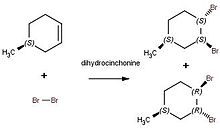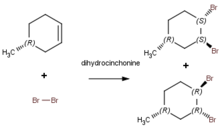Methylcyclohexene

| |
| Names | |
|---|---|
| IUPAC name
1-Methylcyclohexene,3-Methylcyclohexene, 4-Methylcyclohexene
| |
| Systematic IUPAC name
1-Methylcyclohexene,3-Methylcyclohexene, 4-Methylcyclohexene | |
| Other names
2,3,4,5-Tetrahydrotoluene or 1-Methyl-1-Cyclohexene (1-Methylcyclohexene), 1,2,3,6-Tetrahydrotoluene (4-Methylcyclohexene)
| |
| Identifiers | |
3D model (
JSmol ) |
|
| 1304483 (1-methylcyclohexene), 1848550 (3-methylcyclohexene), 1901299 (4-methylcyclohexene) | |
| ChemSpider | |
| EC Number |
|
PubChem CID
|
|
| UNII |
|
| UN number | 3295 |
CompTox Dashboard (EPA)
|
|
| |
| |
| Properties | |
| C7H12 | |
| Molar mass | 96.170 g/mol for 1-methylcyclohexene |
| Appearance | clear, liquid, colorless for 1-methylcyclohexene |
| Density | 0.811 g/mL at 20 °C for 1-methylcyclohexene, 0.805 g/mL for 3-methylcyclohexene, 0.799 g/mL for 4-methylcyclohexene |
| Melting point | -120.4°C for 1-methylcyclohexene at 1 atm, -124 °C for 3-methylcyclohexene, -115.5 °C 4-methylcyclohexene |
| Boiling point | 110 °C for 1-methylcyclohexene at 1 atm, 104 °C for 3-methylcyclohexene, 103 °C 4-methylcyclohexene |
| 0.052 g/kg for 1-methylcyclohexene | |
Refractive index (nD)
|
1.44 for 1-methylcyclohexene |
| Hazards | |
| GHS labelling: | |
  
| |
| Warning | |
| H225, H304, H315, H319, H335 | |
| P210, P233, P240, P241, P242, P243, P261, P264, P271, P280, P301+P310, P302+P352, P303+P361+P353, P304+P340, P305+P351+P338, P312, P321, P331, P332+P313, P337+P313, P362, P370+P378, P403+P233, P403+P235, P405, P501 | |
| Flash point | -3 °C |
| Safety data sheet (SDS) | MSDS (1-methylcyclohexene) |
Except where otherwise noted, data are given for materials in their standard state (at 25 °C [77 °F], 100 kPa).
| |
Methylcyclohexene refers to any one of three organic compounds consisting of cyclohexene with a methyl group substituent. The location of the methyl group relative to the cyclohexene double bond creates the three different structural isomers. These compounds are generally used as a reagent or intermediate to derive other organic compounds.[1]
Methylcyclohexenes are a cyclic olefins. Cyclic olefins can come together to form
As simple molecules, methylcyclohexenes are generally available from different biochemical manufacturers.[citation needed]
Synthesis

There are different ways to produce methylcyclohexenes. A mixture of 1- and 2-methylcyclohexene can be produced by first reacting
Methylcyclohexene is also formed as a by-product in the hydrogenation of toluene to methylcyclohexane over ruthenium catalyst, which can lead to catalyst poisoning if the catalyst is insufficiently activated. Catalysts that have not been sufficiently hydrogenated prior to introduction of toluene will experience poisoning of active sites by methylcyclohexene, as the double bond adsorbs strongly to the catalyst surface.[2]
Structure and bonding

The isomers of methylcyclohexene each contain a six carbon ring structure, with one carbon-carbon double bond within the ring and one methyl substituent on the ring.[3] The bond lengths in 1-methylcyclohexene are approximately 1.33 Å between C1 (the carbon in the ring with the methyl substituent) and C2 (the second carbon of the double bond), 1.51 Å between C2 and C3 (the next carbon around the ring) and between C6 and C1, 1.54 Å between C3 and C4, between C4 and C5, and between C5 and C6, and 1.50 Å between C1 and the carbon of the methyl substituent. The bond lengths of the other isomers of methylcyclohexene vary slightly from 1-methylcyclohexene, due to the different position of the double bond with respect to the methyl substituent.
Reactions
Ozonolysis
As an unsaturated molecule, methylcyclohexene can undergo oxidation with several oxidizing agents, including the strong oxidizing agent
Hydrosilyation

The
Oxidation with Cytochrome P450
1-methylcyclohexene can be oxidized with a Cytochrome P450 catalyst. The ratio of hydroxylation products to epoxidation products was shown to be 2:1.[6]
Bromination


In the presence of a
References
- .
- S2CID 95532469.
- ^ Handbook of Chemistry & Physics Online Section 4.
- .
- S2CID 98097289.
- .
- .
